I found a poem that my father wrote to my mother. I think it is quite good and ought to be shared.

I found this a few days before the second anniversary of his passing. I don’t recall seeing it before.

my blog
I found a poem that my father wrote to my mother. I think it is quite good and ought to be shared.

I found this a few days before the second anniversary of his passing. I don’t recall seeing it before.
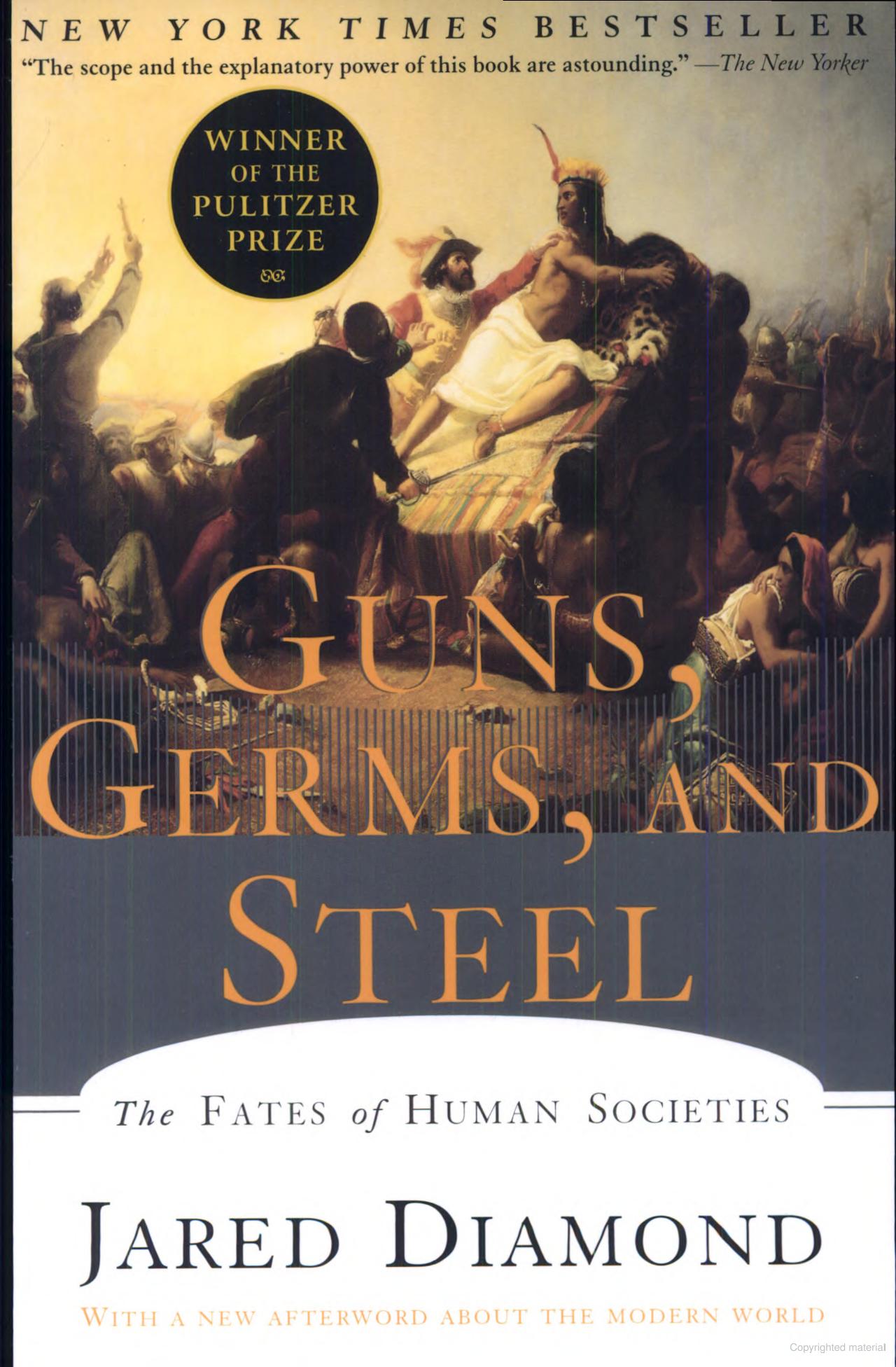
Guns, Germs, and Steel examines the advancement of different societies throughout the world and examines why some societies advanced at greater rates than others. Based on most accepted scientific research, all of humanity originated in what is now Africa. Why then, with an apparent head start, is this not the location of one of the more advanced societies throughout history? This book provides an explanation.
The title is derived from the advantages that generally make one society dominant over another. Guns gave an enormous fighting advantage for a society that had them over one that did not. Germs were also responsible for conquering societies that lacked an immune response to them. Societies that had livestock were the initiators of many of the world’s plagues. Viruses that morphed from livestock to human hosts created diseases capable of nearly wiping out entire civilizations. Civilizations that survived this early on had an acquired immunity that gave them a supreme advantage over hunter-gatherer tribes that had not. Steel in the form of tools and weapons are far superior to like stone and wood forms and give a society that wields them a great advantage over one that does not.
Europeans, arriving by boat, regularly defeated the civilizations of the Americas. Despite being much smaller forces, the Europeans’ more developed immune response to the diseases they often carried with them traveled far in advance of their initial battles. The Europeans’ soldiers on horseback with swords and guns made conquest quite easy and got even easier as the diseases they brought with them wiped out thousands without so much a skirmish.
Based on what I have just described, it might imply that the Europeans gained their advantage by being more inventive and intelligent. The author, however describes the geographic and political structure that actually led to the advantages. One has to live in an environment that has animals that are domesticable to be able to benefit from livestock farming. The Americas only had dogs, turkeys, llamas, and guinea pigs available to them. Domestic crops were also quite limited and the orientation of the Americas is largely North-South, so crops that can be grown in what is now Washington state, are unlikely to survive in Mexico. Europe and Asia had vast areas of land over the same latitude with a greater diversity of domesticable plants and animals. The Americas also have geographic barriers that prevent knowledge from carrying over from region to region. North and South America are divided by the Panama strait. This is an area that narrows to just 50 miles across. Vast deserts also prevented dispersal of information over large areas.
The author asserts that a society’s early advantages were due largely to geography and he provides pretty sound explanations for these assertions. Having livestock and farming provides a surplus that allows people to specialize in something other than just gathering food. It allows for more complex political structures, development of technology, and for the creation of armies with professional soldiers.
The author also discusses the role politics played in the advancement of some societies. China, for example was at one point, the most advanced civilization in the world and responsible for much of the technology of early civilization, but then, due to the way China governed, it stagnated for a period. China is a huge country, that for much of history has had a central authority. If China had a ruler that made a decision, for better or for worse, the entirety of that civilization followed that decision. For example, during the 1400’s China decreased its exploration of the world. At that time Christopher Columbus, an Italian by birth, wished to lead expeditions and asked the European kings of his time for sponsorship to do so. If Columbus had been Chinese, the emperor of China would have declined and that would have been the end of the story. Columbus, however was able to petition the Kings of many of the European nations, and despite getting turned down by most, was able to gain sponsorship for his expeditions through the Spanish King Ferdinand II. This gave Spain and Europe an advantage in sailing, navigation, plundered wealth, and allowed them to conquer civilizations far from Europe.
This book caught the attention of Bill Gates and many other business leaders. Even though this book shows how civilizations advanced, or declined, in the past, many felt the the lessons learned could be applied to getting maximum productivity out of business organizations. If this book can explain why nations fail or succeed, why can’t the principles be applied to businesses as well? Even though this book is largely academic in nature, it is a fairly easy read. As is evidenced by its cover, it also won a Pulitzer prize for its author.
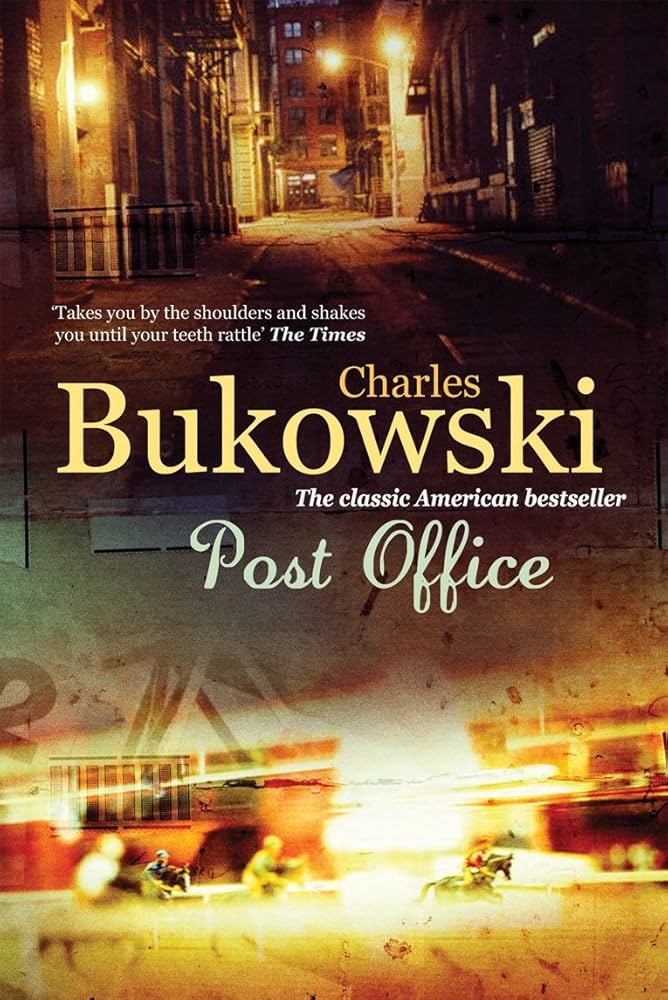
This book is considered fiction, but it is, for the most part, an autobiography of a small section of Bukowski’s life that led up to him becoming a successful author. The main character is Henry Chinaski. His life mirrors that of Bukowski as he spends the better part of 11 years working for the US postal service. This is not part of the book, but Bukowski had tried his hand at writing early in his adult life. He did not enjoy the success he had envisioned, and gave up. The book starts with him needing a source of income, so he applies for the post office. He initially worked as a substitute mail carrier. He would show up early every morning, and if a regular had called in, he would take that person’s route, if not, he went back home, unpaid.
Unlike regular mail carriers, who traversed the same route every time, a substitute carrier was rarely familiar with the route he was given. It made the job quite difficult. To make matters worse, regulars called in at a much higher rate when the weather was poor. This meant old Henry Chinaski had to wander unfamiliar streets in a downpour, all the while answering questions like, “where is the regular mailman?”
During this period of his life, Bukowski (or Chinaski) spent his days working to exhaustion and his evenings drinking to excess. Any free time he had was spent betting on horse races or getting involved with women that only seem to add extra angst to his life. The one exception may have been Betty. He did seem to care for her. She was his partner at the beginning of the story and reappears near the end, only to drink herself to death.
At the end of the bureaucratic, soul-stripping career at the post office, Henry is finally fed up with the constant needling from his supervisors and the doldrums of a typical day. He fills out the forms to resign. He has no plans. Upon returning home, he nearly drinks himself to death. Realizing he has survived his post-employment bender, he decides to write a novel, entitled Post office.
In real life, this becomes Bukowski’s first published novel. At 51 years old he has finally become a successful author. This book is very crude and honest. You won’t find yourself Googling words from these pages as you might from Moby Dick, but Bukowski is a master of brevity and human honesty in writing. He seems to see everything exactly as it is and he makes a common life seem fascinating.
This work may also be one of the first appearances of a modern antihero. He is a main character that you are not inclined to like, but you still find yourself rooting for him. Antihero examples in recent culture would be Tony Soprano from The Sopranos and Walter White from Breaking Bad. I am not sure these characters would exist without Charles Bukowski. I will definitely read more of his work.
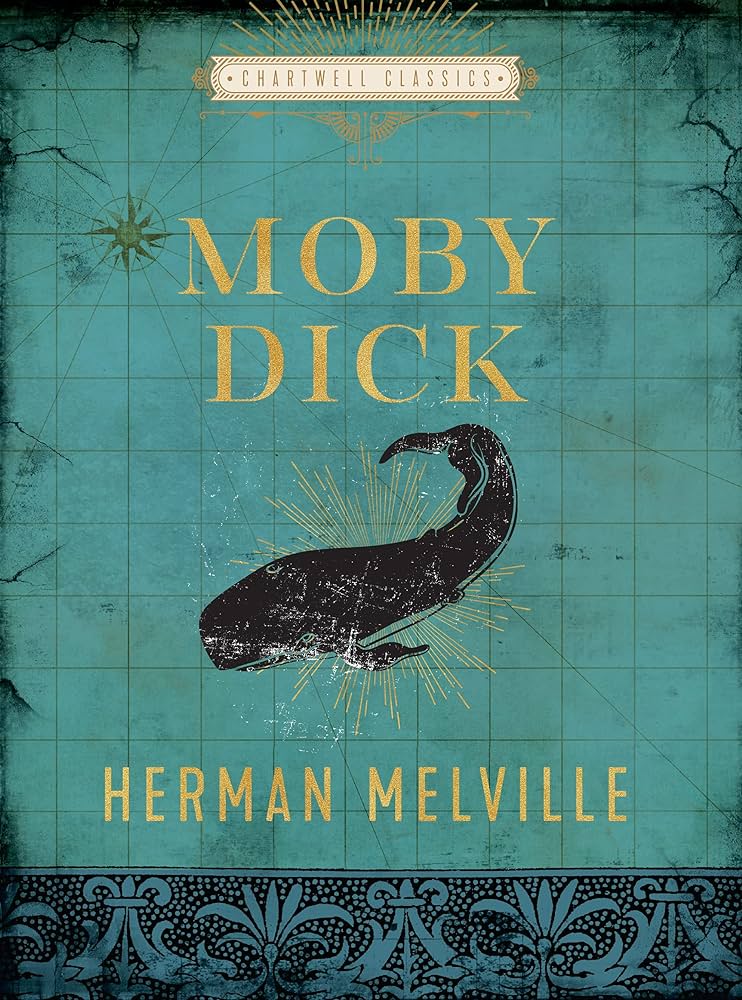
A whopper of a tale in a whopper of a book.
Moby Dick was published in 1851, so some of the language is a little bit dated, but not as unreadable as one might expect. There is also some pirate-like banter among the crew. This can cause some pause for decipherment, but again, not a cause to put the book down. It is largely about life on a mid-1800’s whaling vessel. The strangest part of the book is the fact that it starts from the narrative of Ishmael, the main character of the book, but then it sometimes goes into a third person that is perhaps Melville himself. The funny thing is, based on Melville’s past experience, I believe Ishmael is the fictional version of Melville. Melville grew up in a well-to-do family, but his father died young and the family was left destitute. Melville worked and lived on ships for a time to earn money. This is likely where this story got its sails.
In third-person, Melville gives quite a lengthy lesson on types of whales and their characteristics and how accurately or inaccurately they are portrayed and described in literature and art of his time. He also gives a detailed account of a mutiny. These little history lessons are told outside of the actually story of the main characters. He leaves the fictional story many times to educate the reader on various whaling topics and then returns the narrative back to Ishmael’s view of the fictional account. It is a very odd way of telling a story, but it somehow works.
Melville takes quite a bit of time to introduce the reader to characters. He starts with Ishmaels’s cannibalistic South-Pacific islander bunk-mate, Queequeg. He takes 30 or so pages describing him and Ishmael’s initial aversion to the outwardly savage-looking character that ends up being his best friend. Queequeg is a very experienced harpooner. Ishmael is an experienced sailor, but without whaling experience, greatly relies on Queequeg for guidance when they both agree to be part of the crew of the wooden whaling vessel Pequod.
Captain Ahab is the captain of the Pequod. Melville introduces the character and then takes nearly 100 pages to physically describe him fully. Ahab is missing one leg which he has replaced with the polished carving of a whale jaw that serves as a peg leg. It has an ivory appearance and Ahab has a strategic hole in the deck that fits this peg so he can keep himself steady on the ship when stationed at top deck. He lost his leg to the great white whale, Moby Dick, and Ahab is hell-bent on getting revenge on the creature that disassembled him.
Later in the whaling journey Queequeg becomes so ill that a coffin is built for him. When the end appears near, he makes a miraculous recovery and the coffin is returned to the ship’s carpenter to be re-purposed as a floatation device.
The Pequod encounters and kills several whales on its journey, but never meets Moby Dick. During these journeys, the narrator goes into great detail about how a whale is processed as well as its anatomy. He describes its skeleton and notes how the skeleton does not really give a true indication of the living whale’s actual form. In this, Mellville is quite accurate, one would likely not guess the living form of a sperm whale from just the skeleton:

Versus the actual living whale:

The top of the head, above the skull shown in the skeletal illustration, is filled with a large reservoir, that holds as many as 500 gallons or more, of oil. This is the primary reason for hunting the whale, as this oil had many applications at the time, especially as lamp oil. Bear in mind, that this whale can grow to nearly 80 feet long and weight over 50 tons. The skeleton is enormous.
Ahab takes his crew across all ends of the earth until he finally finds a fellow whaling vessel, Rachel, that has encountered the great white whale. Ahab gets his wish of the opportunity to slay the whale. As expected, it does not go according to plan. The Pequod and all its boats are destroyed by the giant whale in Ahab’s pursuit of him. As a spinning vortex pulls the Pequod and all its remnants to the bottom of the sea, only one crewman remains with his head above water – Ishmael. As all that remains vanishes into the sea, the coffin, previously made for Queequeg, shoots to the surface. Ishmael floats upon it until he is rescued by the passing Rachel.
It seems pretty obvious from reading this book, that the author of Jaws drew a great deal of inspiration from this story. It was a different time and place, and a different sea creature, but the lust for greed and revenge on the open sea plays out in a similar manner. The mannerisms of many of the characters are also similar.
As famous as this book is, it is interesting to note that it was not popular in the author’s time. Released in 1851, it did not become popular until the early 1900’s, after Mellville’s death. Mellville largely gave up writing novels and worked as a US customs inspector after his writing career faltered, largely due to lack of initial success of this book.
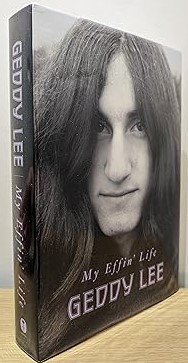
Progressive rock band Rush’s bass guitar extraordinaire, Geddy Lee got extremely bored during the pandemic. He is not someone who likes idle time, so he decided to write an autobiography. I have never read the autobiography of a musician before, so I really do not know where the bar stands for these things, but this one was quite an interesting read. A musician who spent 40+ years on the road is going to have some stories. Even without his music-related stories, his life is quite interesting.
His parents met as teenage, Polish concentration camp inmates in Auschwitz. They were eventually moved to separate camps during the war, but whatever spark they had upon meeting, managed to carry on throughout the war. They were both imprisoned for nearly the entire duration of WWII. It is a miracle that either one survived, let alone both. Many of their family members did not. Upon liberation, Geddy’s father walked hundreds of miles from Dachau to Bergen-Belsen to reunite with his love. They actually married in the officer’s quarters of Bergen-Belsen as it was then being used to house the newly freed prisoners.
His parents found that many Jews were not warmly welcomed back to their native Poland, and more often than not, all their property had been appropriated. With this knowledge, Geddy’s parents traveled to Toronto, where a relative had fled to at the start of the war, to start a new life. With almost no belongings, they started their new life. Little by little, they were able to buy their own house in a Jewish neighborhood in the Toronto suburbs. They eventually had three children, one of which being Geddy.
Their life was continuously improving as Geddy’s father manages to start a successful general store. Then tragedy hits. Geddy’s father passes away after a brief illness when Geddy was only 12. His father was only 45. The effects of six years of forced labor in the prison camps had taken their toll. His heart gave out.
The biography details the Jewish mourning customs which lasts 11 months. A prayer is said every day and music is not permitted. Unfortunately for Geddy, Bar mitzvahs often utilize music to help celebrate the event, and Geddy’s fell within the mourning timeframe. Perhaps this starvation from music made him appreciate it more than he would have otherwise. He started his first band shortly after this mourning period. He eventually started one with his classmate, Aleksandar Živojinović (stage name, Alex Lifeson, Geddy’s birth name was Gary Lee Weinrib). Both Geddy and Alex had an insatiable appetite for music. Neither of their parents was all that keen of having musicians for sons, but there was no stopping them. They played as often as they could and eventually, when the drinking age was lowered to 18 just as they turned 18, they were able to play in local bars. They were able to make a modest living playing music. They were also able to hone their craft. Eventually they gained a fairly large following in their native Toronto and managed to record an album with a song that somehow caught the attention of a Cleveland, Ohio radio station DJ. The song Working Man seemed to strike a nerve with the largely blue-collar audience. This led to an audience in the US as well as Canada.
They toured like crazed musical gypsies. Travelling from show to show in a station wagon, they took turns driving while one member slept on top of the gear in the back of the car. Eventually the station wagon became a van, then an RV, and then a tour bus. I don’t know how they did it. They played 250 shows a year for a decade, living out of different vehicles until they made it.
The book then chronicles the production of their various albums and the departure of their longtime producer, Terry Brown. It also covers the events of their final tour. Their esteemed drummer, Neil Peart, suffered the loss of his teenage daughter to a car accident and then the loss of his wife to cancer all within a year. His life was shattered and he roamed North America on a motorcycle for nearly two years trying to make sense of things. During this time the band’s status was up in the air. Eventually, Neil, was able to build his life back. He found a new wife and felt ready to resume his career as a musician after five years adrift. The band was back in business for another decade, until Neil had enough. They had their final tour in 2015. Fate then turned on Neil once again as, sadly, he passed away from brain cancer in 2020. Geddy talks about the difficulty in accepting that he will never see him again. Geddy still appears randomly on stages to perform with others, but Rush as a live band is officially gone.
This book was a very interesting read, particularly if you a fan of Rush’s music.
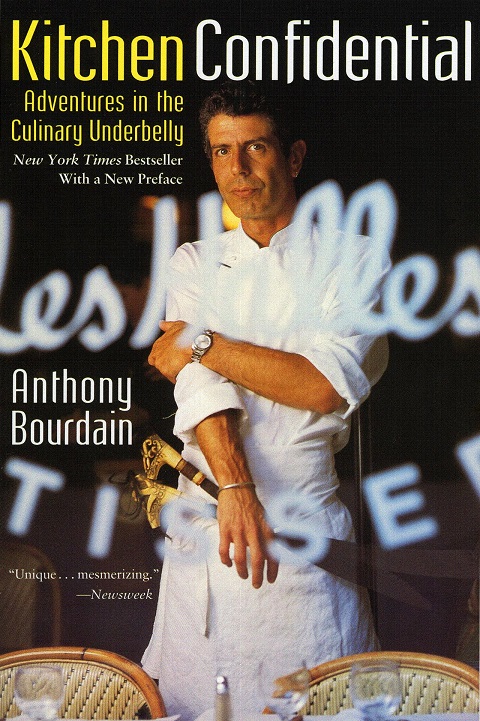
I had never paid much attention to Anthony Bourdain during the height of his popularity. I thought his show was just a cooking show. Something, at the time, I was not really interested in. Recently, I have begun watching Parts Unknown and realize it is not really a cooking show. It is more of show that taught about different cultures. It also dabbled in politics, and of course, food.
This is the book that made him a household name. He had previously written two works of fiction, but they went nowhere. Before this book, he was basically an unknown, outside of New York city, journeyman chef. It is clear from reading this that he is very well-read. He writes in a Charles Bukowski or William S. Burroughs sort of manner. Kind of a high-brow look at the gutter. He lays out his life, warts and all, for the entire world to see. He paints a very vivid picture of his life and the crazy characters he mingled with. Oftentimes, the individuals he described had me laughing openly. The debauchery and depravity is so outrageous that it appears more funny than sad. There is definitely talk of cooking contained in the book, but the story is more about his life and the lives of restaurant kitchen culture in New York city.
Bourdain mentions that he is risking his livelihood by publishing this book. He has pulled his life out of the throes of addiction and become a well-respected chef at this point. Revealing the worst points of his life was definitely a risk. If this book had only been a modest success, it may have been damaging. The fact that it was so honest and took so many risks, however, is probably what also helped make it successful. I found this to be an amazing book. Be warned, however, it can be a bit crude at times. This book is not for someone who is easily offended.
I wrote a little program to help myself learn the different degrees of the notes of each of the 12 musical keys. These would be the actual note names of the old Do-Re-Mi-Fa-So-La-Ti-Do Solfège for a given musical key. The program randomly picks a key and scale degree and asks the user to pick the radio button corresponding to the correct response. The actual notes of each scale are not hard-coded into the program. Intervals of the chromatic scale are used to compute them when a question is randomly chosen.
The program:
The correct answer below would be “D” as the A major scale contains the notes A, B, C#, D, E, F#, and G#. The fourth note is “D”. Chords are constructed with the different scale degrees, for example, a plain major chord consists of the Root(first note), the Third(third note), and the Fifth(fifth note), or the A, C# and E notes for an “A” chord. All chords are constructed using rules of combinations of notes based on scale degrees. Knowing them will allow a musician, or even a hack like me, to construct chords of any type, in any key. Here is a screenshot of this simple, but effective program:
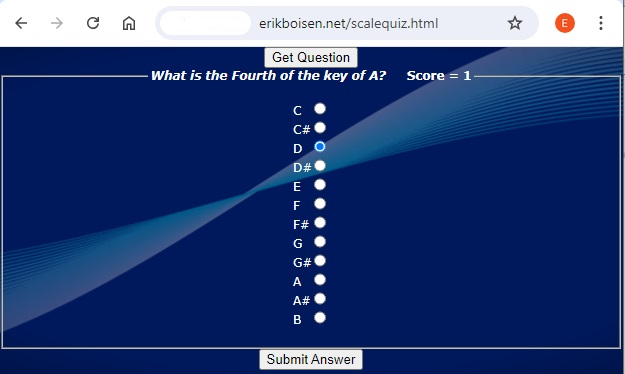
It works just like a deck of flash cards. I have found it to be a pretty effective way to help learn the notes of each key. You get one point for a correct answer and minus one point for an incorrect answer, but it does not let you get a negative score. If you have any interest in basic music theory, give it a try with the link below, if not, thanks for reading this until the end.
note: For those of you with OCD, you may have become uncomfortable due to some misalignment in the quiz display. Sincere apologies-it has been corrected.
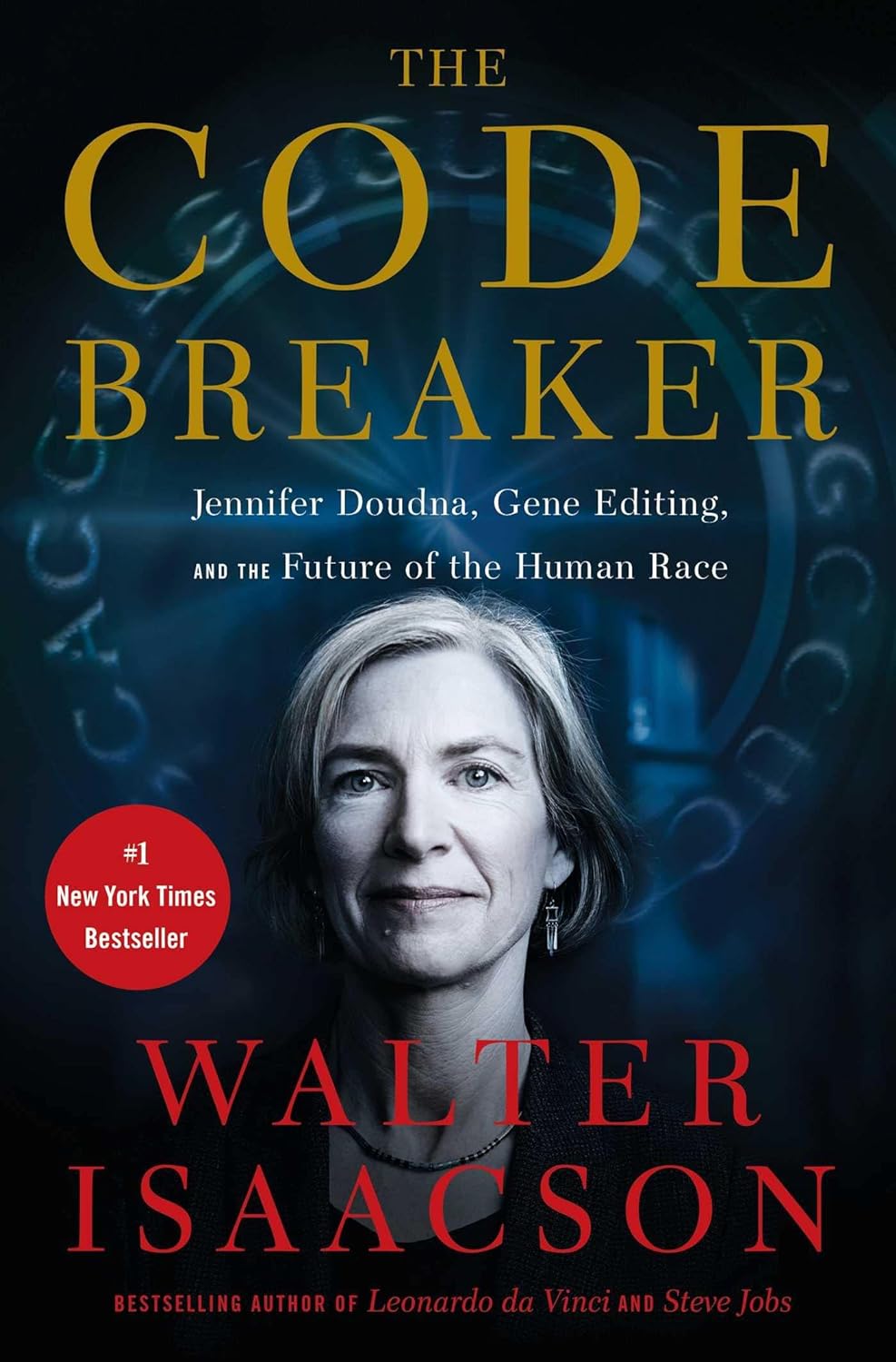
As with all Walter Walter Isaacson biographies, this is a fairly long book. I got stuck in Pennsylvania for an extended period because of the Crowdstrike debacle, so I was afforded quite a bit of time to read this in airports and on planes. It took less than two weeks to read the nearly 500 pages.
This book covers the story of the discovery of CRISPR and its use as a gene editing tool. I had heard of it previously to picking up the book. I knew it involved gene editing, but I really did not understand its implications in detecting and curing diseases. I though it was just a way to selectively create designer organisms. It does in fact do that, and has actually been used in China, in 2018, to create three AIDS-resistant human babies, but there are many more applications that do not come with moral conundrums.
Bacteria have been using CRISPR for millions of years to fend off viruses. When a bacteria is exposed to a virus, it adds a little genetic code to its DNA so that it can identify and defend against a future exposure to a like virus. All future generations of this bacteria will have this coding, and thus be protected from this virus. Several scientists identified this behavior in bacteria and sought ways to understand and control it. Being able to control this process allows someone to edit the genes of virtually any living thing. The key figure in this book is the American scientist, Jennifer Doudna. She, along with French scientist, Emmanuelle Charpentier, were awarded the 2020 Nobel prize in chemistry for their work on CRISPR. The book notes several other scientists that made similar advancements in gene editing using CRISPR, but Doudna and Charpentier were recognized as having figured out its workings first.
In addition to gene editing, CRISPR technology can also be used to detect disease. Many of the COVID tests used in the last pandemic, utilized CRISPR to create low-cost, home-based tests. Many of the COVID vaccines also used CRISPR technology. One of the key discoveries is that RNA is actually the component that directs changes in DNA. In the presence of the appropriate enzyme, RNA can be used to edit genes in cells.
Immunizations created using CRISPR for defense against a virus such as COVID can be manufactured far more cost-effectively than conventional methods that employ a non-viable variant of the virus. They can also be adapted to be used against other viruses, as needed.
I believe we have just scratched the surface of what biotechnology may bring. Currently, many of the treatments are prohibitively expensive, but there already exists cures for previously untreatable diseases such as sickle cell anemia. It has already cured one woman. The initial cost for treatment was about one million dollars. Sickle cell afflicts approximately 100,000 people in the US. Sickle-cell generally means that the afflicted will not see life beyond their 50’s. Worry was that it would bankrupt the healthcare system, but new technology is always expensive at first. Costs will come down. CRISPR appears to have applications for many diseases, including many cancers. We are at the very beginning of this technology and there will be many new applications discovered in the coming years.
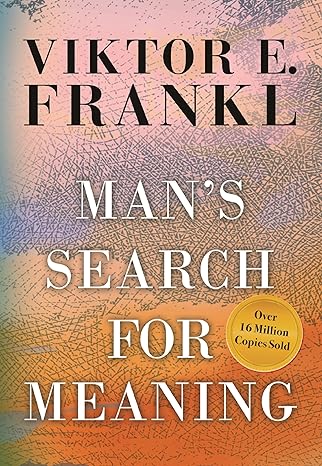
Viktor E. Frankl was an Austrian psychiatrist and Neurologist who became a concentration camp inmate during World War II. He was born in Austria, earned his M.D. in 1930, and had established himself as an experienced physician when he was sent to his first of four concentration camps as an inmate. Like most holocaust survivors, he was stripped of everything upon being taken by the Nazis. He was stripped of possessions, of family, and of title.
His training as a psychiatrist gave him a very unique look into every aspect of what it means to be human. He saw the extremes of human endurance, of compassion, and of course, cruelty. He saw how he, and those around him dealt with the incredible stress of knowing that each moment may be your last. He saw similarities in the actions and thoughts of those who succumbed to their situation and he saw similarities in those who survived it.
He concluded that humans are capable of enduring almost anything if they feel that they are enduring it for a purpose. Frankl used the idea that he needed to be there for his wife when this hell-on-earth ended. He endured years of hard labor, while consuming just scraps of bread and watered-down soup. He toiled outside in the winter months with tattered, inadequate clothing. All the while knowing that a pause in his work or a glance in the wrong direction, at the wrong time, may draw a beating, or worse yet, a bullet.
Frankl occasionally saw unexpected kindness from a Nazi guard. He sometimes saw extreme cruelty from a capo. A capo was a fellow prisoner that was favored for some reason by the guards and put in charge of a work detail or barrack. A capo typically received extra rations and privileges. Apparently, a small amount of power was capable of quite a bit of moral corruption.
The life of a concentration camp inmate was the most stressful situation a human being could endure. This unlikely setting served as a sort of psychological observation laboratory for Frankl where he first began to develop a theory of motivation for human existence. Contrary to fellow Austrian Sigmund Freud’s theory that humans are guided by pleasure, Frankl determined that they are guided by finding a purpose or meaning to their lives.
In the end, the image that kept Frankl alive, that of his wife, was found to be just a memory. His wife Tilly succumbed to illness in Bergen-Belsen well before his liberation. Not knowing this likely greatly assisted in his survival. He was able to toil on in the hopes of one day being there for her.
The psychiatric field of Logotherapy is largely attributed to Frankl and has shown great success in helping patients with OCD, schizophrenia, and terminal illnesses. Its underlying philosophy is to help a patient find a meaning or purpose to his or her life. This purpose can often differ greatly from individual to individual, but upon finding, and pursuing it, one’s well-being is greatly enhanced.
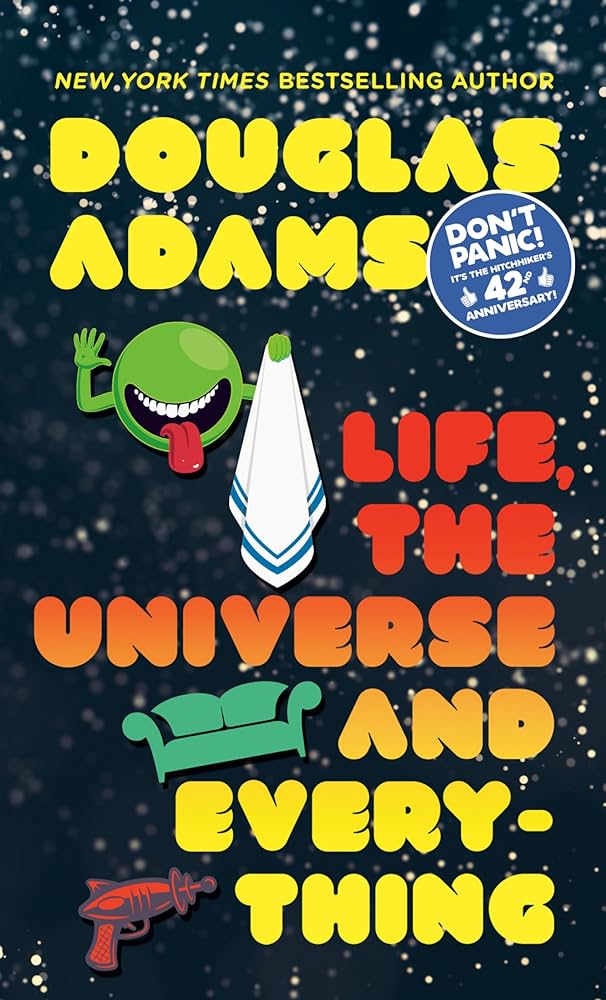
This book is a continuation of The Hitchhiker’s Guide to the Galaxy. This is the third book in the inaccurately named five-part trilogy. I have read two of these in a row. I hope I am not boring anyone, assuming anyone is reading this, with another Douglas Adams novel. Once again, the entire cast returns in this book. Even the thought-to-be-dead, perpetually depressed, Robot, Marvin. Marvin took some damage riding a stolen starship into a nearby sun, but somehow escaped incineration. Some of his replacement limbs have been cobbled together with odd spare parts, but he lives on.
The book starts where The Restaurant at the End of the Universe left us, with Arthur and Ford stranded on prehistoric earth. We discover, however, that they have split up. Arthur remained near the location of the original landing site, but Ford left to wander the earth. Arthur, still clad in his pajamas, robe, and slippers, has lived alone in a cave for four years. He has grown lonely and despondent. Finally, Ford returns. Initially, Arthur thinks he is a figment of his isolated imagination. Ford has returned because he believes he has tracked down a space-time eddy in the area where Arthur has been living. It presents itself in the form of a chesterfield sofa. Arthur and Ford chase it around as it moves around going in and out of existence. Finally, they leap onto it and are transported, sofa and all, to the Lord’s Cricket Ground just a couple of days before the timeframe of The Hitchhiker’s Guide to the Galaxy. They arrive in the middle of the field as a match is in play. The crowd and announcers are bewildered by the appearance, out of thin air, of two long-bearded men on a chesterfield sofa.
Arthur is carried off the field on said sofa and both Arthur and Ford are questioned by police who aren’t quite sure if the duo have done anything wrong. As this is happening, the sofa vanishes out of existence. The police, fearful that they might be losing their grip on reality, let the two go. This seems to be the end of the excitement until a ship appears from the sky and out from it appears Slartibartfast, followed shortly afterwards by another ship that disperses violent white robots everywhere. The scene quickly escalates to pure chaos as the robots begin unleashing mayhem. The robots have come to steal the Ashes urn. This is the trophy given to the victor of the Australia versus England cricket series.
Arthur and Ford join Slartibartfast in his ship and leave earth to head for a party that has been going on for generations in an attempt to get information that will save the universe. Slartibartfast and Ford make it to the party, but Arthur does not. He has apparently upset a being known as an Agrajag. This being has been reincarnated many times, only to have his existence snuffed out, mostly unwittingly, by Arthur. The Agrajag seeks revenge, but ends up getting killed, once again, by Arthur, who accidentally topples a statue of himself on the Agrajag.
In the end, Ford, Slartifartfast, Trillian, and Arthur are all reunited and learn that the Krikkit race is responsible for the killer robots that wish to end all life. They also learn that the Krikkits are being manipulated by an all-knowing super-computer named Hactar. Trillian persuades Hactar to cease existing, but his plan to end the universe is still in motion. On earth once again, Arthur attempts to return the Ashes Urn just after they have been stolen. He is is unsuccessful in this endeavor, but manages to save the universe by disposing of a cosmic-supernova-bomb and beheading a malevolent Krikkit robot with the robot’s own club. He does this still clad in pajamas, bathrobe, and slippers.
There are two more books left in this series, but for the moment, I am moving on to something else. Perhaps I will revisit this series later.